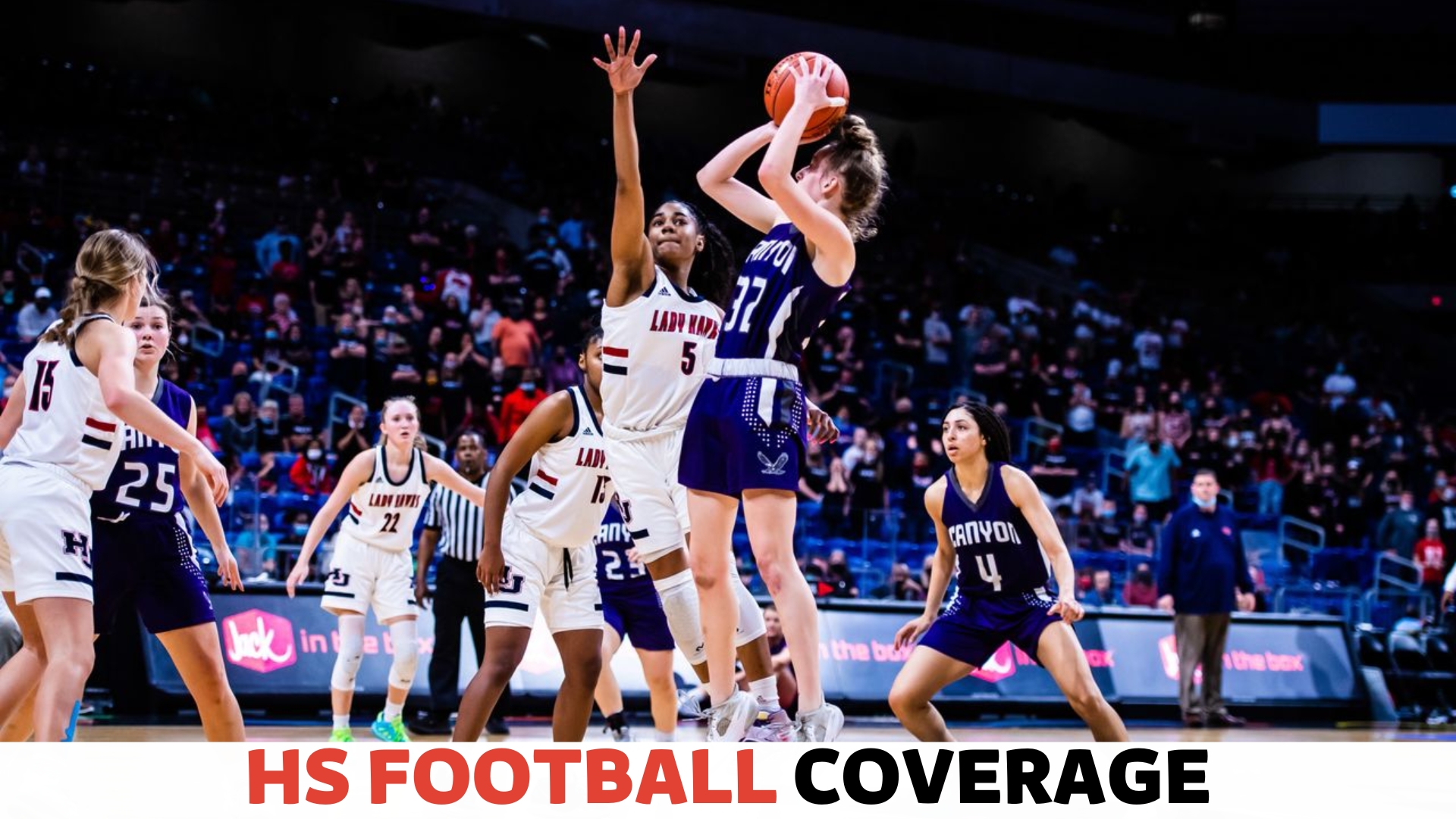Why are Girls Leaving High School Basketball: Examining the Maturing Trends

Stream: High School Sports Live On-Demand (Free Trial)
-
High School Basketball -
Live and On-Demand -
Unlimited Access -
Watch on Your Phone, Tab, PC, Smart TV, and Other Devices -
WATCH LIVE HERE
Girls are leaving high school basketball due to various factors like lack of opportunities and gender inequality in the sport. Engaging in this sport has become less appealing to girls as they face challenges such as limited college scholarships, unequal media coverage, and societal pressure to conform to traditional gender roles.
Despite the efforts to promote girls’ basketball, the decline in participation remains a concern. This article delves into why girls are leaving high school basketball and explores potential solutions to this issue, ensuring equal opportunities and a level playing field for all young athletes.
Understanding these factors can help develop strategies to reverse this trend and encourage more girls to continue their basketball journey beyond high school.
The Decline in Female Participation in High School Basketball
Girls are leaving high school basketball at an alarming rate, leading to a decline in female participation. This trend raises questions about the factors causing this exodus and highlights the need for initiatives to encourage girls to stay engaged in the sport.
Factors Contributing to the Decrease in Female Student-athletes
The decline in female participation in high school basketball is a growing concern that warrants a closer look. Understanding the factors contributing to this decrease can shed light on how we can address the issue and encourage more girls to take up basketball.
Here are some of the key factors:
1. Lack of Resources and Investment
One of the primary reasons behind the decline is the lack of resources and investment in high school girls’ basketball programs. Many schools allocate a significant portion of their budget to boys’ sports, leaving the girls’ teams with inadequate facilities, equipment, and coaching staff.
This disparity sends a clear message that girls’ basketball is less valued, which can discourage potential female student-athletes from participating.
2. Limited Exposure and Media Coverage
Another factor influencing the decline in female participation is the limited exposure and media coverage given to girls’ high school basketball. While boys’ basketball games receive extensive media attention and airtime, girls’ games are often overlooked or completely ignored.
As a result, talented female athletes don’t get the recognition they deserve, making it harder for them to gain scholarships or pursue basketball at the collegiate level. This lack of visibility can demotivate girls and push them away from the sport.
3. Social Stigma and Gender Stereotypes
Societal perceptions and gender stereotypes also play a significant role in the decline of female student-athletes in high school basketball. Despite advancements in gender equality, there remains a lingering stereotype that basketball, especially at a competitive level, is a sport more suited for boys.
This mindset can create barriers for girls interested in basketball, leading them to choose alternative sports or activities perceived as more “feminine.” Breaking these stereotypes and promoting inclusivity is crucial for encouraging more girls to pursue basketball.
4. Time Constraints and Other Commitments
High school girls often face time constraints due to various commitments, such as academics, part-time jobs, or family responsibilities. These factors can limit the amount of time girls dedicate to basketball and may discourage them from participating in organized sports.
Schools and communities should consider flexible practice schedules and provide support networks to help female student-athletes manage their time more effectively.
5. Lack of Role Models and Mentorship
Another contributing factor is the absence of female basketball role models and mentorship opportunities. Girls need female solid athletes to look up to and inspire them to pursue basketball. Without influential role models, fostering a sense of passion and motivation in young girls considering joining a basketball team becomes challenging.
Schools and communities should actively seek out opportunities for mentorship programs and invite successful female athletes to share their stories and experiences.
By addressing these factors and creating an environment that supports and encourages female student-athletes, we can reverse the decline in girls’ participation in high school basketball.
Ensuring equal opportunities, resources, and investment for boys’ and girls’ sports is crucial to promoting inclusivity and breaking gender stereotypes.
Together, we can empower girls to embrace basketball, allowing them to develop as athletes and confident individuals ready to take on any challenge.
The Influence of Societal and Cultural Norms
One of the factors contributing to the decline in high school basketball participation for girls is the influence of societal and cultural norms. These norms often perpetuate gender stereotypes that affect female athletes and discourage them from participating in the sport.
Understanding the impact of these stereotypes is crucial in addressing the issue and finding ways to encourage more girls to stay in basketball throughout high school.
Impact of Gender Stereotypes on Female Athletes
Gender stereotypes play a significant role in shaping the decisions and opportunities available to female athletes. These stereotypes suggest that sports like basketball are more suitable for boys and that girls should focus on other areas of interest.
Consequently, many girls internalize these societal expectations and feel discouraged from pursuing a sport traditionally dominated by male athletes.
Here are a few ways in which gender stereotypes affect female athletes:
- Limited opportunities: Due to prevailing stereotypes, girls may face limited opportunities to participate in basketball. Schools may allocate fewer resources for girls’ teams, prioritize boys’ sports, or underestimate the potential of female athletes.
- Lower funding: The lack of investment in girls’ basketball programs further reinforces the notion that basketball is not for girls. This can result in inadequate coaching, subpar facilities, and fewer resources for training and development.
- Social pressure: Society often imposes expectations on girls to conform to traditional gender roles, which may prioritize activities other than sports. This pressure can make it challenging for girls to prioritize basketball or view it as a viable long-term pursuit.
Addressing Gender Stereotypes and Empowering Female Athletes
Efforts are being made to challenge and dismantle gender stereotypes that hinder girls’ participation in basketball.
By creating a more inclusive and supportive environment, we can empower female athletes to revel in their love for the sport and pursue it without reservations.
Here are a few steps that can be taken to address gender stereotypes:
- Education and awareness: Promoting education and understanding about the impact of gender stereotypes can help change societal perceptions. Educating communities, parents, and coaches about the benefits of girls participating in basketball, including increased self-confidence, teamwork, and leadership skills, is essential.
- Equal opportunities: Schools and organizations should ensure that girls have equal opportunities to participate in basketball and receive the same support and resources as their male counterparts. This includes providing access to quality coaching, facilities, and competitive opportunities.
- Role models: Highlighting successful female athletes who excel in basketball can be powerful role models. By showcasing their achievements and stories, we can inspire young girls to pursue the sport and challenge traditional gender norms.
Creating an environment free from gender stereotypes is crucial to retaining girls in high school basketball, nurturing their talent, and supporting their aspirations.
By acknowledging the impact of societal and cultural norms, we can work towards breaking down the barriers that hinder female athletes and create a more inclusive future for women in basketball.
Lack Of Opportunities and Resources for Girls in High School Basketball
Girls leaving high school basketball has become an alarming trend in recent years. One key factor contributing to this decline is the lack of opportunities and resources available to female athletes compared to their male counterparts.
From disparities in funding and facilities to overall support, girls’ basketball has been overshadowed by the prominence of boys’ basketball.
These inequalities not only hinder the growth and development of young female athletes but also perpetuate a gender imbalance within the sports community.
Disparities in Funding
One major issue girls’ high school basketball programs face is the stark disparities in funding. While boys’ basketball teams often receive significant financial support, allowing them to hire experienced coaches, provide state-of-the-art equipment, and travel to tournaments, girls’ teams are left scrambling for resources.
This lack of financial investment limits the opportunities for girls to compete at a high level, diminishing the overall growth and competitiveness of the sport for female athletes.
Disparities in Facilities
Another area where girls’ high school basketball faces challenges is in the realm of facilities. Many girls’ teams are forced to practice and play on subpar courts, lacking proper maintenance and essential amenities.
In contrast, boys’ basketball programs often have access to top-notch facilities with well-maintained courts, locker rooms, and training facilities. This discrepancy in facilities sends a clear message to young girls that their sport is not valued at the same level as boys’ basketball.
Disparities in Support
Support from coaches, teachers, and the overall school community is crucial for the success and longevity of any high school basketball program. Sadly, girls’ basketball often faces a lack of support compared to boys’ basketball.
Coaches and educators may prioritize the boys’ team, resulting in less attention, resources, and mentoring dedicated to female athletes. Without crucial support, girls’ athletes may feel discouraged and undervalued, ultimately leading them to leave the sport.
The lack of opportunities and resources for girls in high school basketball is an issue that needs urgent attention. Disparities in funding, facilities, and support not only obstruct the growth and development of female athletes but also perpetuate the gender imbalance within the sport.
It is essential to work towards leveling the playing field and providing equal opportunities for all athletes, regardless of gender. By investing in girls’ basketball programs and creating an environment of inclusivity, we can rectify this trend and foster a future where all athletes thrive.
The Academic Pressure and Shifting Priorities for Female Student-athletes
Female student-athletes are leaving high school basketball due to the increasing academic pressure and shifting priorities they face. The demands of academics and the desire to focus on other extracurricular activities have led these girls to leave the sport they once loved.
Balancing Academic Expectations and Athletic Commitments
When it comes to girls leaving high school basketball, one of the key factors is the increasing academic pressure and shifting priorities for female student-athletes.
In today’s competitive educational landscape, academic performance is paramount, sometimes overshadowing the commitment to sports. Let us explore how the balancing act between academic expectations and athletic commitments impacts young female athletes:
A Lack of Time
With rigorous coursework, extracurricular activities, and social obligations, it can be challenging for female student-athletes to find the time necessary to dedicate to basketball.
Their academic responsibilities leave them limited hours to train, practice, and compete in basketball matches. As a result, many talented players may feel compelled to step away from the sport they love, prioritizing their studies over their athletic pursuits.
Academic Pressure and Performance Anxiety
The pressure to excel academically can be intense for high school students, particularly those aspiring to attend top-tier colleges or universities. Female student-athletes may feel the weight of this pressure even more as they try to balance their desire to succeed in basketball with the need to achieve high grades.
This academic stress, coupled with the demands of athletic competitions and training sessions, can lead to performance anxiety, affecting both their academic and athletic performance.
Shifting Priorities and Career Aspirations
As young female athletes progress through high school, their priorities and career aspirations may evolve. While basketball may have been their primary focus during their earlier years, they may discover new interests and passions that divert their attention from the sport.
The desire to explore other fields of study or pursue different career paths can lead to a reduced commitment to basketball, ultimately resulting in girls leaving high school basketball teams.
Moreover, societal expectations and career prospects can also influence these shifting priorities. In today’s world, there is a growing recognition of the importance of education and professional qualifications for women.
Many young female athletes prioritize their academic journey to secure a stable career and future opportunities beyond sports.
| Potential reasons for girls leaving high school basketball |
|---|
| Academic pressure and performance anxiety |
| Lack of time due to academic and social commitments |
| Shifting priorities and evolving career aspirations |
| Influence of societal expectations |
In conclusion, the academic pressure and shifting priorities for female student-athletes play a significant role in why girls leave high school basketball.
Balancing academic expectations and athletic commitments can be challenging, causing a lack of time, performance anxiety, and changing career aspirations. These factors, combined with societal expectations, contribute to the decision of many young female athletes to step away from the sport.
It is crucial to address these issues and create an environment that supports and encourages their pursuit of academic excellence and athletic success.
Alternative Sports and Extracurricular Activities Attracting Girls
Girls leaving high school basketball may be attracted to alternative sports and extracurricular activities that offer diversity and inclusivity, allowing them to explore their interests and passions beyond traditional sports.
Rising Popularity of Non-traditional Sports and Activities for Girls
As girls continue to leave high school basketball, it is crucial to understand the alternative sports and extracurricular activities attracting their attention.
In recent years, there has been a significant rise in the popularity of non-traditional sports and activities among girls. These alternative options offer a refreshing change from the traditional sports landscape and give girls more diverse opportunities to show their skills and passion.
Let’s explore some of these rising trends:
Bouldering: A Vertical Challenge
Bouldering, a form of rock climbing that focuses on short, challenging routes without ropes or harnesses, has gained immense popularity among girls.
This sport uniquely combines physical strength, problem-solving skills, and mental focus. Bouldering provides a safe and inclusive environment for girls to challenge themselves and develop confidence while fostering a strong sense of community among participants.
Ultimate Frisbee: A Game of Strategy and Teamwork
Ultimate Frisbee, often called “Ultimate,” has emerged as a compelling alternative for girls seeking a team sport experience. This non-contact sport combines the elements of football, soccer, and basketball to score points by passing the disc to teammates in the opposing end zone.
Ultimate Frisbee emphasizes fair play, inclusivity, and self-officiation, promoting a sense of camaraderie and cooperation among players. It’s no wonder that girls are drawn to this sport’s strategic and team-oriented nature.
Parkour: A Dynamic Movement Discipline
Parkour, an athletic training discipline that involves moving quickly and efficiently through obstacles using only the human body, has captured the interest of many girls.
This activity builds physical strength, coordination, and flexibility, fostering creativity and problem-solving skills. Parkour offers an alternative avenue for girls to express their athleticism and explore their limits in a challenging and unconventional way, pushing the boundaries of traditional sports.
Dance: Artistry in Motion
Dance, in its various forms, such as ballet, jazz, hip-hop, and contemporary, has long been a popular extracurricular activity for girls. It allows them to express themselves artistically and embrace creativity while gaining physical fitness and grace.
Dance offers a supportive and enriching environment where girls can build self-confidence, discipline, and teamwork skills, all while exploring the art of movement.
Table Tennis: A Fast-paced Racket Sport
Table tennis, also known as ping pong, has become attractive for girls seeking a fast-paced and visually engaging sport. This racket sport demands quick reflexes, hand-eye coordination, and precision, making it a thrilling and challenging activity.
Table tennis provides girls with a competitive outlet that can be enjoyed individually or as a team. The accessibility and versatility of this sport make it appealing to girls of all skill levels.
Conclusion
The declining participation of girls in high school basketball is a concerning trend. Factors such as lack of exposure, limited opportunities, and societal stereotypes have contributed to this phenomenon.
To reverse this trend, it is crucial for schools, coaches, and communities to actively work towards creating a supportive and inclusive environment that encourages girls to participate in and enjoy basketball.
By nurturing their love for the game and providing equal opportunities, we can empower girls to excel in high school basketball and beyond.





